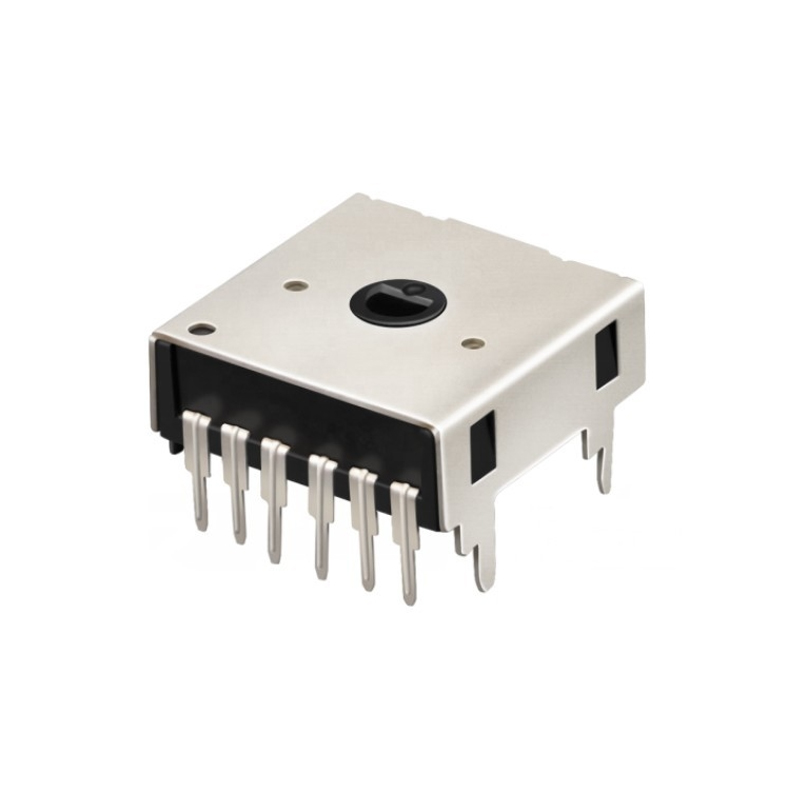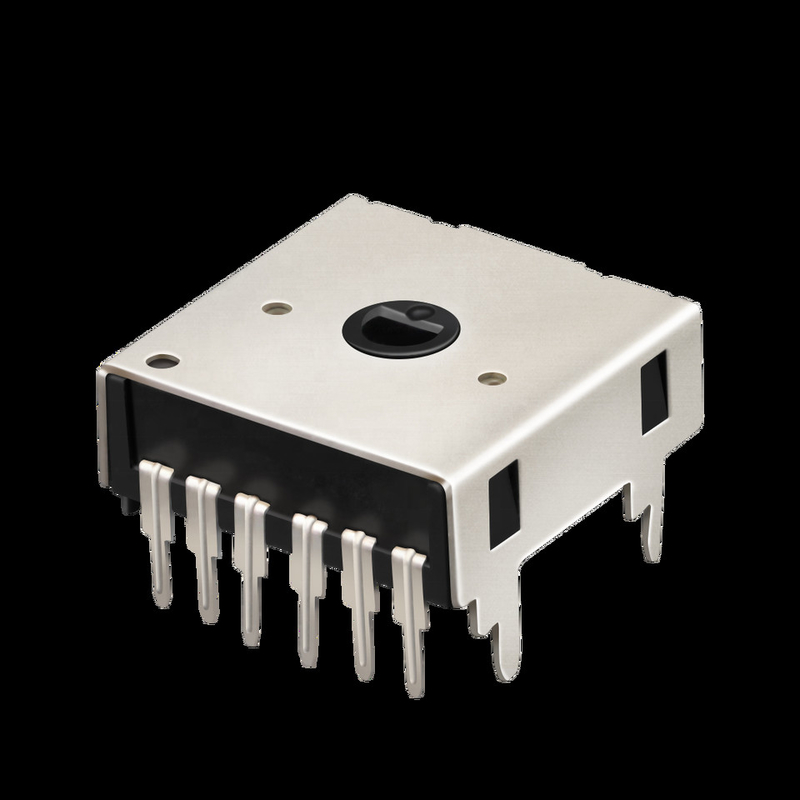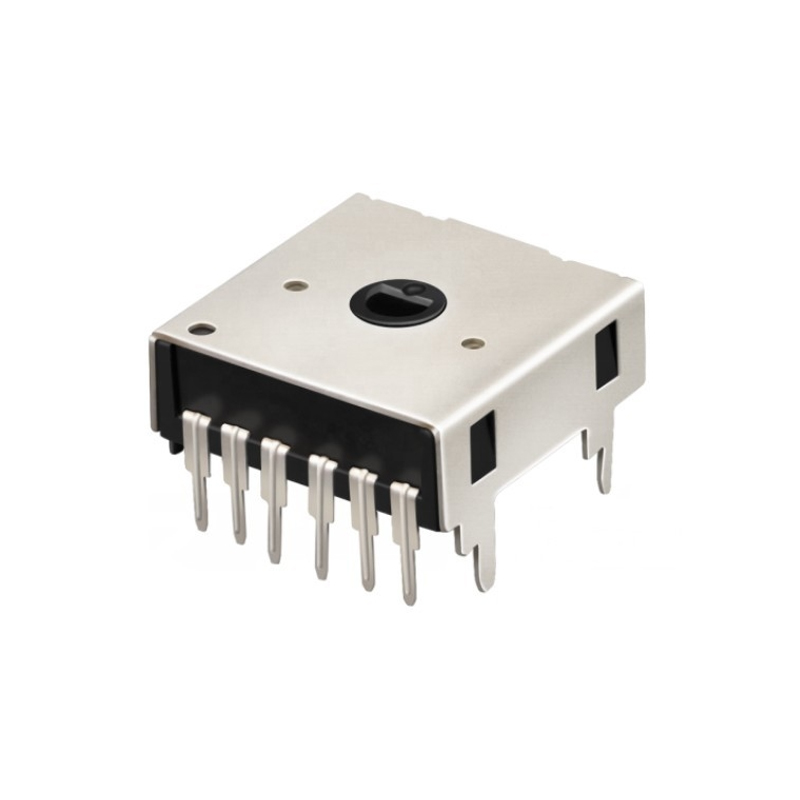



Are you a factory or a trading company?
Answer: We are a factory, we can guarantee our price is first hand, very cheap and competitive.
How is the quality control in your factory?
Answer: All products will be 100% checked before shipment.
How to contact us?
Tel: 86-13377785035
Wechat: kkg-vivian
Email: xyy@kkg.tw
WhatsApp: +8613377785035
Rotary Encoder As Mouse
 Rotary Encoder as Mouse is an innovative device that combines the functions of a rotary encoder with a mouse. With the rotary encoder, users can easily control the movement of the cursor, which is suitable for precise graphic design, video editing and other applications that require detailed control. The device has high precision, sensitive response speed and simple operation. It not only supports traditional click functions, but also can perform page scrolling, zooming and other operations by rotation to improve work efficiency. It is compatible with most operating systems and has a simple connection method, suitable for various usage scenarios.
Rotary Encoder as Mouse is an innovative device that combines the functions of a rotary encoder with a mouse. With the rotary encoder, users can easily control the movement of the cursor, which is suitable for precise graphic design, video editing and other applications that require detailed control. The device has high precision, sensitive response speed and simple operation. It not only supports traditional click functions, but also can perform page scrolling, zooming and other operations by rotation to improve work efficiency. It is compatible with most operating systems and has a simple connection method, suitable for various usage scenarios.
Features
1. High precision and reliability
Rotary encoders are able to accurately convert rotating mechanical displacements into electrical signals with high measurement accuracy and resolution. Therefore, buttons designed using the rotary encoder principle can provide more accurate and reliable signals when triggered, reducing the possibility of false triggering.
2. Non-contact design, long life
Rotary encoders use contactless optical or magnetic conversion technology to avoid the performance degradation problems caused by wear and tear of traditional mechanical contact sensors. This non-contact design allows the rotary encoder button to have a longer service life, reducing the inconvenience and losses caused by equipment failure.
3. Versatility
Rotary encoders can not only measure the angle of rotation or displacement, but also calculate the rotational speed based on the frequency of the output signal. Therefore, buttons designed using the rotary encoder principle can be used to realize different functions according to the angle of rotation, speed and other parameters. For example, it can be set to trigger one function by rotating clockwise and another function by rotating counterclockwise, or the sensitivity of the trigger function can be adjusted according to the rotation speed.
4.Compatibility and scalability
Rotary encoder buttons usually have good compatibility with different control systems and applications. At the same time, some products also support through programming or configuration software to customize the function and behavior of the rotary encoder to meet the user's individual needs. This scalability makes the rotary encoder button more potential for customization and specialization.
5. Stability and anti-interference
Rotary encoder using photoelectric or magnetic conversion technology, the signal transmission process is not easily affected by external electromagnetic interference. Therefore, the rotary encoder button in harsh industrial environments or electromagnetic interference in the occasion can also maintain stable performance.
Applications
1. Industrial automation and robotics
Industrial control: In industrial automation production lines, rotary encoder buttons are often used to measure and control parameters such as the angle of rotation, displacement and speed of mechanical components. By using them in conjunction with PLCs (programmable logic controllers), servo motors and other equipment, automated control and precise measurement can be realized.
Robot joint control: In robotics, rotary encoder buttons are widely used for joint angle measurement and control. By accurately measuring the rotation angle and speed of the robot joints, precise control of the robot's attitude and motion trajectory can be realized.
2. Precision measurement and positioning
Optical instruments: In optical instruments, rotary encoder buttons are commonly used to measure small rotation angles or displacements. Its high-precision and high-resolution features make the measurement results more accurate and reliable.
Precision machine tools: In precision machine tools, rotary encoder buttons are also commonly used to measure and control the angle of rotation and displacement of the workpiece to ensure processing accuracy and product quality.
3. Audio and video equipment
Audio equipment: In audio equipment, such as mixing consoles, mixers, etc., rotary encoder buttons are often used as a controller to adjust the volume, balance, gain and other parameters. Through the rotary encoder button, the user can more intuitively adjust the audio parameters to obtain better sound quality.
Video equipment: In video equipment, such as cameras, VCRs, etc., the rotary encoder buttons are also often used as controllers to adjust parameters such as focus, exposure, white balance, etc. The rotary encoder buttons allow the user to adjust audio parameters more intuitively for better sound quality. Through the rotary encoder button, the user can more accurately control the video parameters, to obtain a clearer image effect.
4. Automotive and Aerospace
Automotive: In the automotive industry, rotary encoder buttons can be used to control in-car entertainment systems, navigation systems, air conditioning systems and other equipment. Through the rotary encoder button, the driver can operate these devices more conveniently, improving driving safety and comfort.
Aerospace: In the aerospace industry, rotary encoder pushbuttons are used to control flight control systems, navigation systems and other equipment. Its high precision and reliability make the rotary encoder button in the aerospace field has a wide range of application prospects.
5. Consumer Electronics
Smart home: in the smart home system, the rotary encoder button can be used to control the lights, curtains, air conditioning and other equipment switching and adjustment. Through the rotary encoder button, users can control these devices more intuitively to improve the convenience and comfort of home life.
Portable Devices: In portable devices, such as cell phones and tablets, rotary encoder buttons can also be used to adjust volume, scroll through menus, and other operations. Although touchscreens are more common in these devices, rotary encoder buttons still offer unique advantages in some cases, such as providing a better feel and preventing misuse.
6. Other areas
Medical devices: In medical devices, rotary encoder buttons can be used to adjust parameters such as the rotation angle and speed of surgical instruments to ensure the accuracy and safety of surgery.
Gaming equipment: In gaming equipment, rotary encoder buttons can also be used to adjust game parameters, control game characters and other operations. Through the rotary encoder button, players can control the game process more intuitively and improve the gaming experience.
Advantages
Precise control: The rotary encoder provides higher precision cursor control, suitable for fine operations such as graphic design and video editing.
Improve work efficiency: Rotary control enables fast scrolling, zooming and other functions, reducing frequent clicks and improving operational efficiency.
Comfortable operating experience: Rotary gestures are more intuitive and natural than traditional mice, especially suitable for long time use and reduce hand fatigue.
Versatility: In addition to basic clicking functions, it also supports customized operations, such as multi-point scrolling, switching applications, etc., increasing the flexibility of use.
Wide compatibility: Supports compatibility with a wide range of operating systems and devices, easy to connect and suitable for different working environments.
Compact design: Compact size, easy to carry and save desktop space, suitable for various office or mobile working scenarios.
Previous: Mouser Rotary Encoder

Tel:
Add:
Rixing Industrial Zone,Tangxia Town, Dongguan City, Guangdong Province, China
Copyright © 2025 KKG ELECTRONICS ELECTRIC Co., LTD. All rights reserved
Privacy policy Cookie tracking